machine-learning-nanodegree
Class notes for the Machine Learning Nanodegree at Udacity
Go to IndexDeep Models for Text and Sequences
Challenges for working with texts
In text, usually words that occur with the least frequency are the most important to derive meaning from the text. For example, “do” is a common word and doesn’t help a model to classify a document. In contrast, “retinopathy” is a very rare word, that occurs 0.00001% in English, and the document will be most likely a medical document. These rare events are a problem in deep learning, because ideally, we want to have lots of data to train on.
Another problem is that we can use different words that have the same meaning. This means that the model will have to learn about these semantic relations, which means that we’ll need to feed lots of training data with labels to it.

A solution to these problems is to use Unsupervised Learning. This is a good solution because of two reasons:
- There is lot of textual data available for our models to train upon
- Similar words tend to appear in similar contexts
Embeddings
The idea to generalize on text is that by learning to sort the things that belong into some context, our model will understand what are those things.
Take for example the phrases:
- The cat purrs
- The cat hunts mice
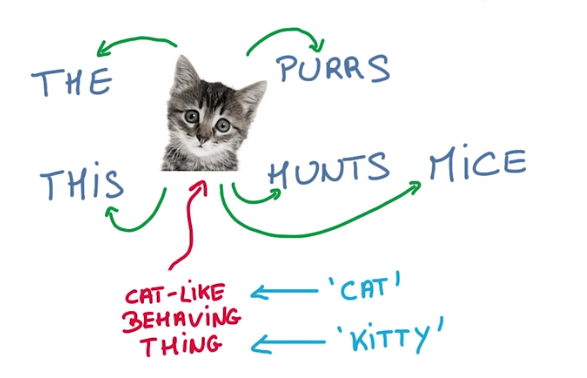
Cat can be replaced by any cat-like entity. For instance, kitty would provide the same meaning on the sentences. So if a model is successful in understanding that cat and kitty can both be used on these sentences, we can say that the model has learned the meaning of cat and kitty on this context.
To learn about the context of a word, we’ll model the words using embeddings. Embeddings are small vectors that map words with similar meaning into similar vectors in a word-space dimension.

Word2vec
Word2vec is a simple model that works surprisingly well. As an example, we take a sentence, and create an embedding for each word in it. Initially a random one. Then we train the model, using a Logistic Classifier and the words inside a window around the original word.
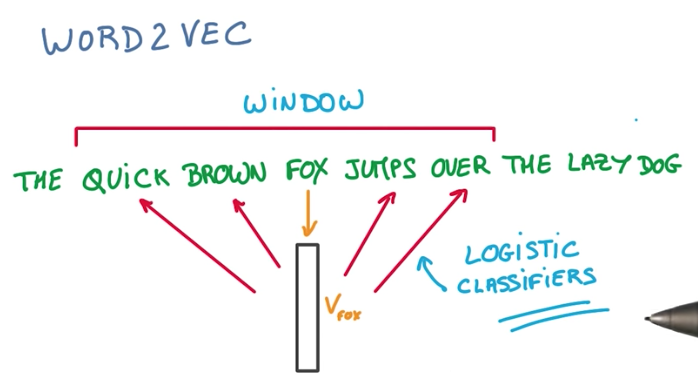
There are 2 details about word2vec:
- when comparing embeddings, we should use cosine distance and unitary norms, because the length of the embedding vector is irrelevant for the comparison purpose.
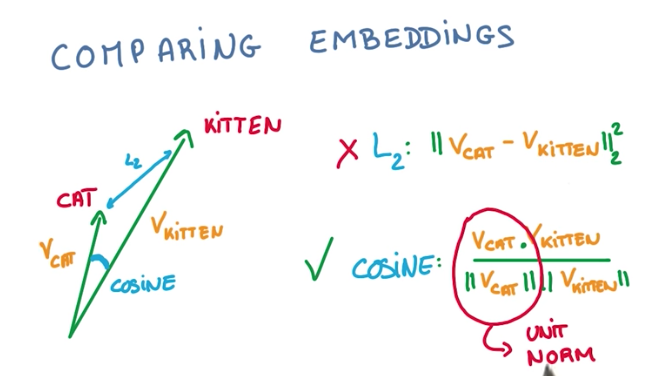
- when training, instead of comparing the softmax vector to the full corpus vocabulary, we can sample it and select, along with the target, some other words that are not the target. This doesn’t impact the accuracy of the model, but greatly increase its performance.
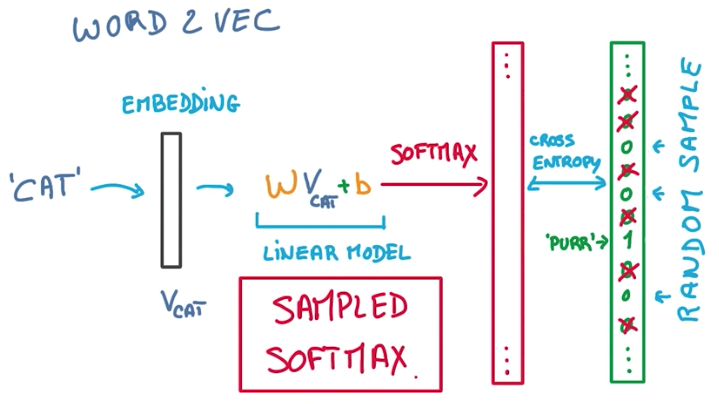
Finally, as a side-note, to visualize the embeddings vectors, we should use t-SNE instead of PCA, for dimensionality reduction. That is, because t-SNE preserves the similarity and distance between vectors, while PCA could deform it.
Sequences of Varying Length
So far we have seen only inputs with fixed size. This makes it easy to turn inputs into vectors and feed them to a Neural Network. The problem is that in the real world, texts (and speech) don’t have a fixed number of words, but instead a varying number of words. To solve this problem, we will use Recurrent Neural Networks.
Recurrent Neural Networks
While CNNs use shared parameters to extract patterns in space (2D, 3D, etc.), Recurrent Neural Networks (or RNNs for short) use a similar approach but over time, instead of space.
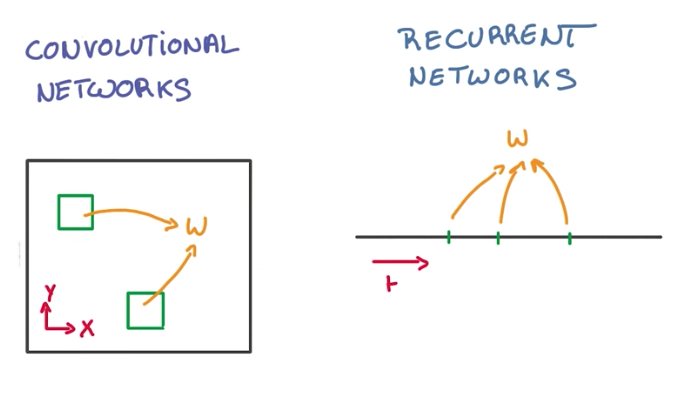
So the general idea for working with text, is that we want to take inputs from events in time, and classify them as they come.
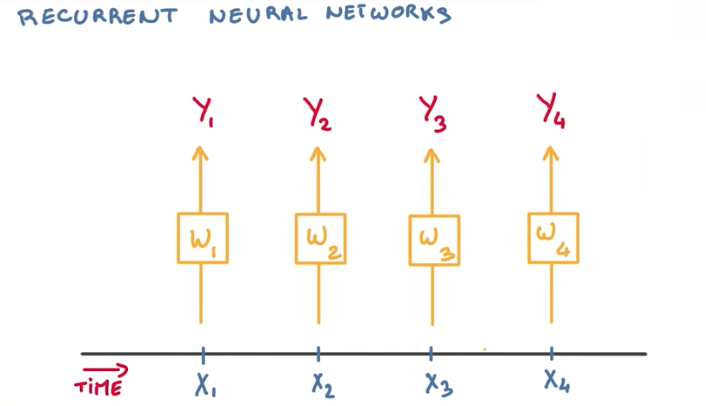
If the sequence is reasonably stationary, we can simplify things and use the same model (with the same weights) for all incoming events.
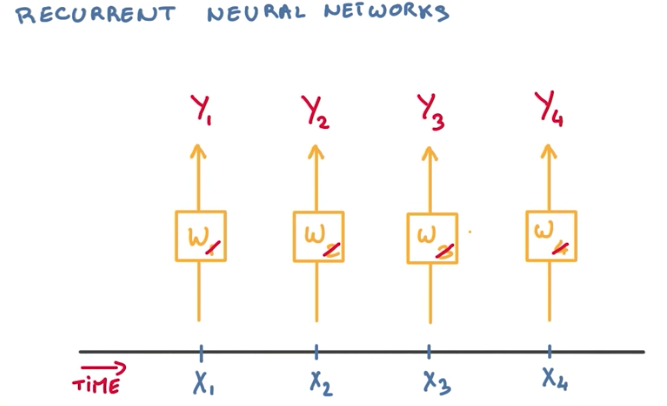
But because we are working with a sequence of text, we want to take into account the previous events, while evaluating future events, so our model has a better understanding of the context of the words. This can be achieved by feeding previous events recurrently to all future classifications.
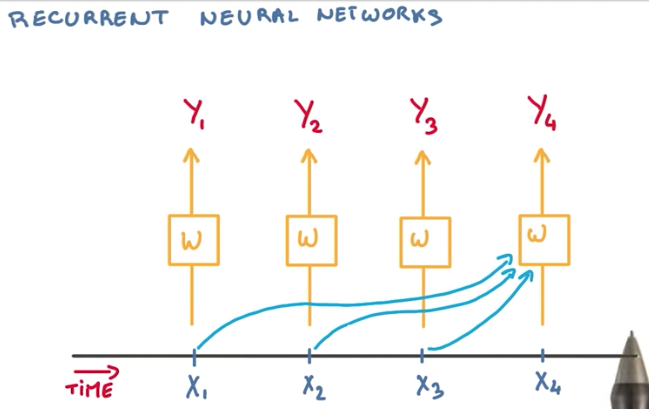
To achieve better performance, a better approach is to use the state of the previous classifier recursively as a summary of what happened before.
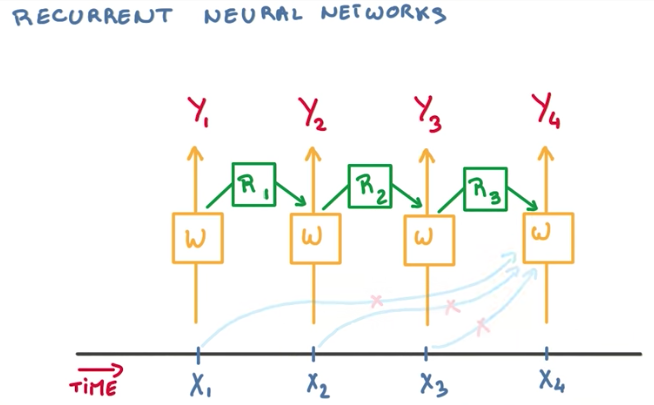
The problem this approach introduces is that for some large sequence of text, we would require a very deep neural network to hold the state of all previous events. To solve this problem, we use tying again, and only keep the state of the previous model.
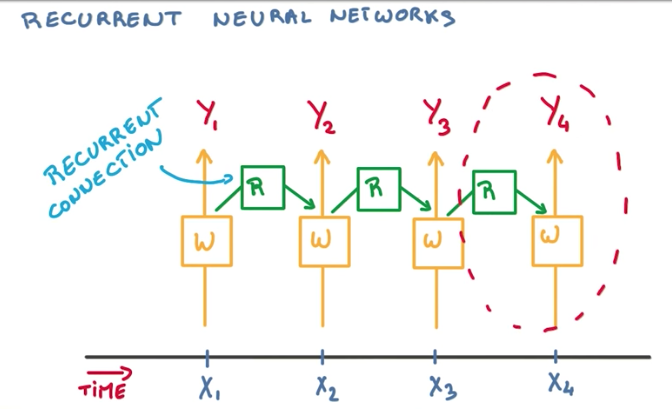
This final architecture is pretty simple. We have our network connecting to each input in time, and a recurrent connection connecting our network with its previous state, to summarize the context of our sequence of inputs.
Backpropagation through time
With the current architecture proposed to RNNs, we still have some problems.
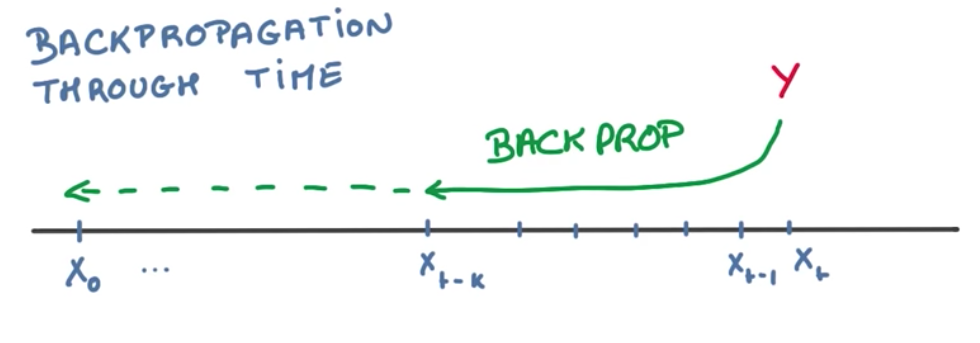
To compute all the weights of the network, we would need to backpropagate through time. This means that we would have to compute the derivatives of all the weights used recurrently throughout all events. This is bad for SGD because it produces correlated updates, while SGD expects uncorrelated updates.
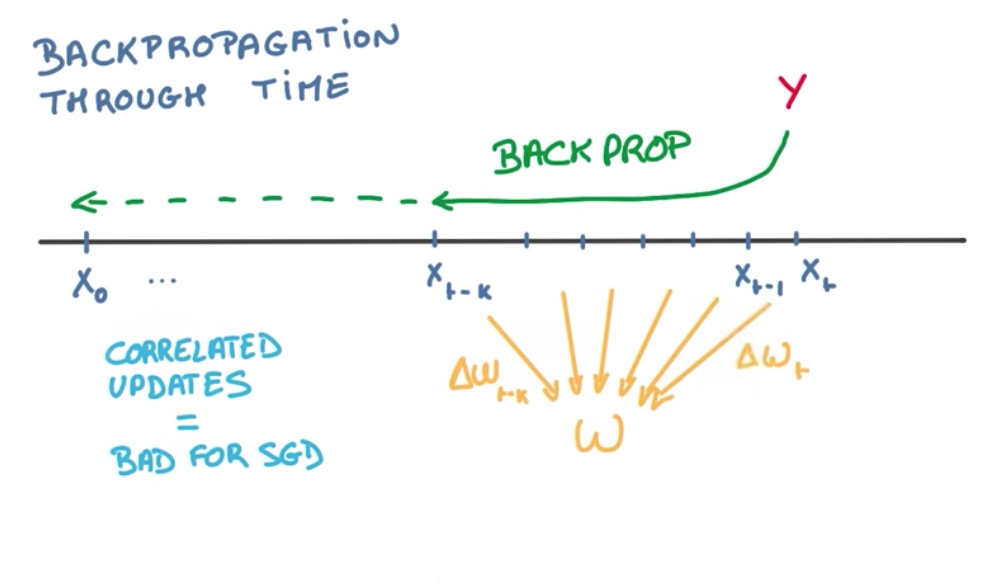
These correlated updates causes 2 problems:
- Exploding gradients: when the derivatives get too big too fast, causing the gradient to explode into infinity.
- Vanishing gradients: when the derivatives get too small too fast, causing the gradient to vanish into zero.
We are going to solve these 2 problems in very different ways.
Exploding Gradient Solution
To fix the exploding gradient problem, we use a hack that is very effective and cheap: gradient clipping. In order to prevent the gradient from growing unbounded, we can compute its norm, and shrink the update step when the norm grows too big.
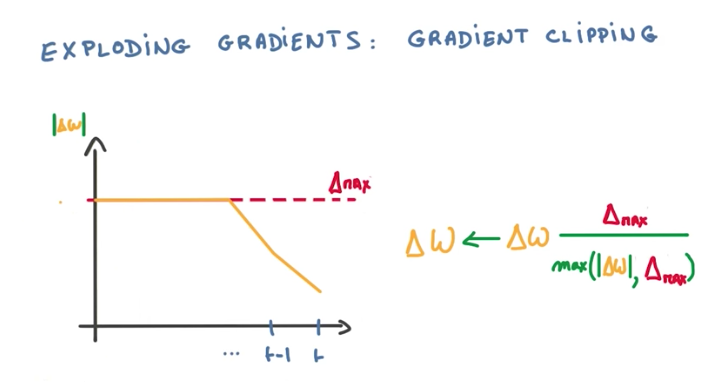
Vanishing Gradient Problem Explained
The vanishing gradient problem is more difficult to fix. This problem makes our model remember only the recent events and forget about the distant past. This makes our RNNs not work well after a few time steps.
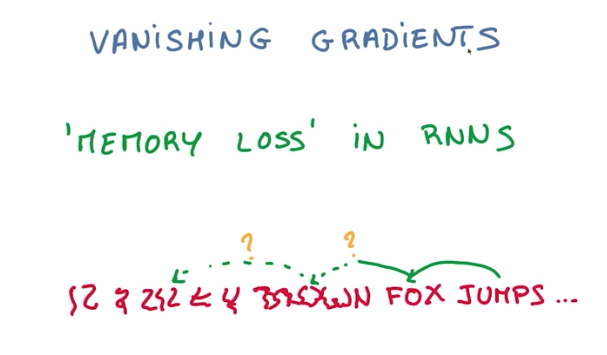
LSTM
This is where LSTM (Long short-term memory) comes in. LSTM solves the vanishing gradient problem, by replacing our recurrent connections with a very simple machine that prevents this memory loss.

Memory Cell
To understand how LSTM works, we need to conceptualize what is a memory machine. A memory machine is basically a virtual space where we can store information (write), retrieve this information (read) and that sometimes empties itself if not used too often (forget).
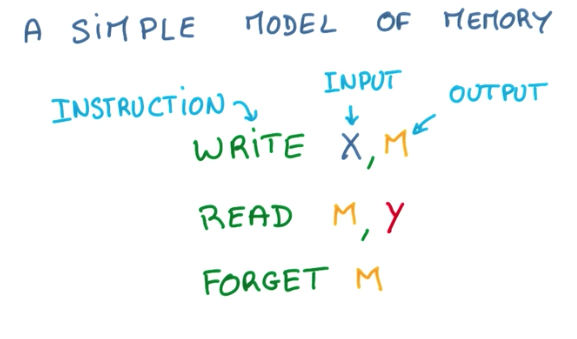
This same concept can be drawn in a diagram like below. X, Y and M are all vectors/matrices.
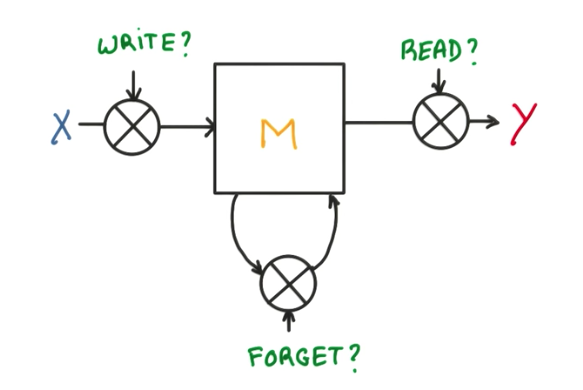
LSTM Cell
As we have seen before, we now have a memory diagram where we can read, write and forget some data. Instead of using binary functions for these operations, if we can use continuous functions that output some value between 0 and 1, indicating how much we should write, read or forget, then it becomes very interesting for the math. With a continuous function, like a sigmoid, we can compute the derivative of this sigma factor and backpropagate through it. This is exactly what a LSTM cell is.
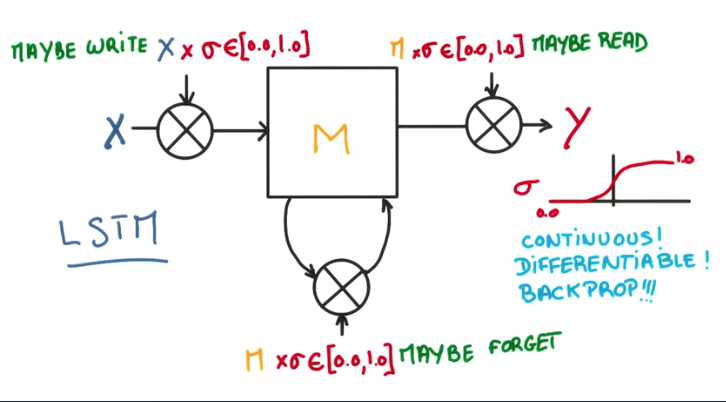
In a detailed view, LSTM cell introduces 3 new hyperparameters, for each of the gates, and a tanh control function to stabilize the output. This is all well behaved and easily differentiable, allowing us compute the update steps of the SGD without any problems.
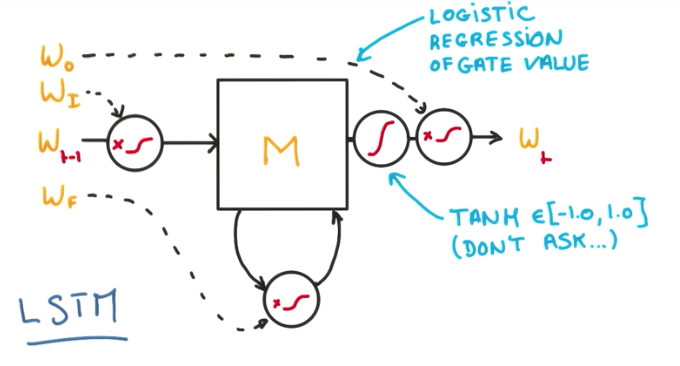
The introduction of these 3 new gates is what allow our model to keep the memory longer when it needs to and ignore things when it should. As a result, the optimization is much easier and the gradient vanishing problem disappears.
LSTM Regularization
Finally, we can use L2 regularization just as in any Neural Network.
We can also use dropouts, but only in the inputs and outputs. Never on the recurrent connections,
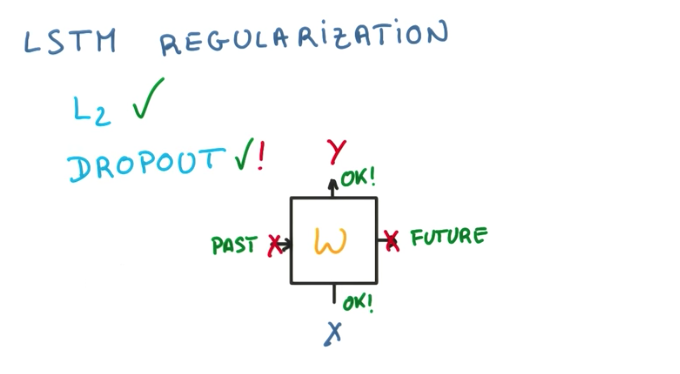
Beam Search
So now that we have built a RNN, what is it good for??
One good example is using RNNs to predict a sequence of text, given some previous words or characters.

To make these predictions, we could feed all events into a RNN to predict the next character and then, recursively, sample the letter or word with highest probability, feed it back to the RNN as a new event, and predict again, and so on.
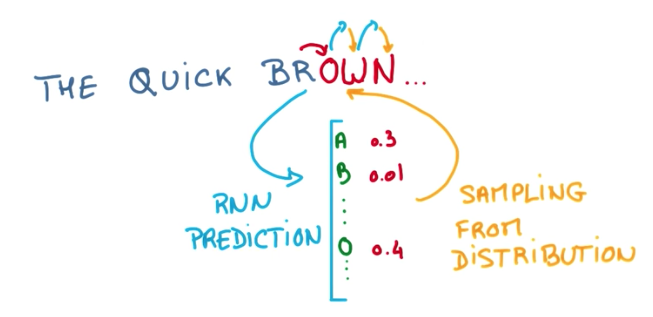
This is a greedy approach. We can improve the overall result by selecting more than 1 result to feed back into the RNN. This grows exponentially, but we have the benefit of not falling into local optima and evaluating more hypothesis.
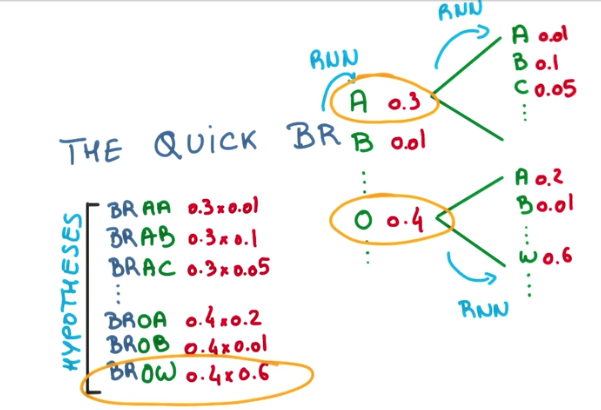
Finally, we can do what is called a beam search and prune the tree of possibilities by removing all predictions with probabilities that fall below some threshold and keeping only good candidates.
RNN Applications
Using RNNs and LSTMs we can achieve various results.
For instance, with RNN we can take a varying number of inputs and output a fixed width vector.
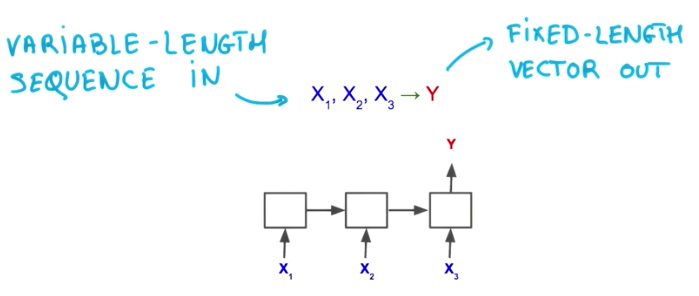
We can also take a fixed width input and output a sequence with variable length.

We can plug both of these architectures and take variable length of sequences as inputs and outputs, so that we can work with any type of data.
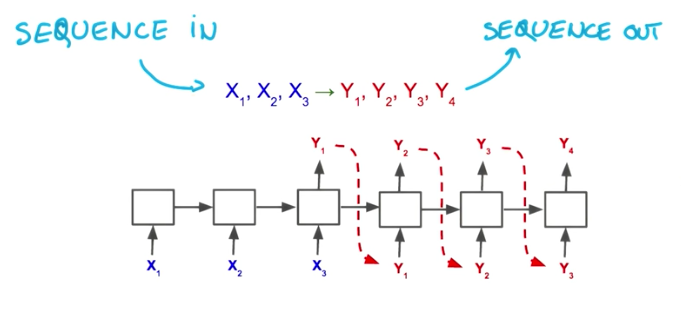
With variable length inputs and outputs, we can build:
- a machine translation system
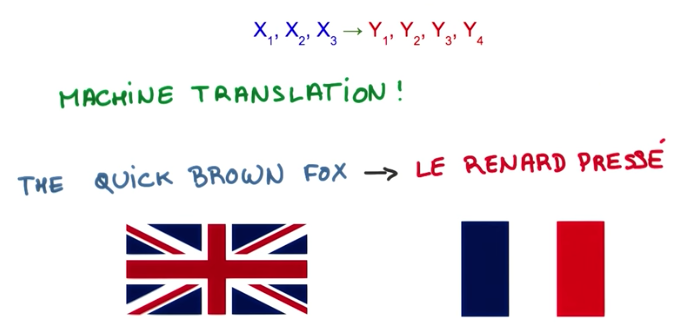
- a speech recognition system
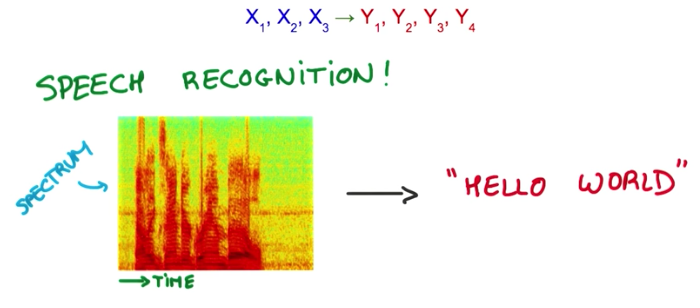
Using ConvNets together with RNNs, we can take images as input and build a image captioning system for example.
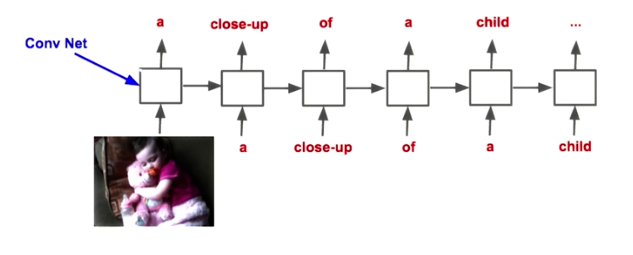
There is even a image captioning dataset publicly available to train on.
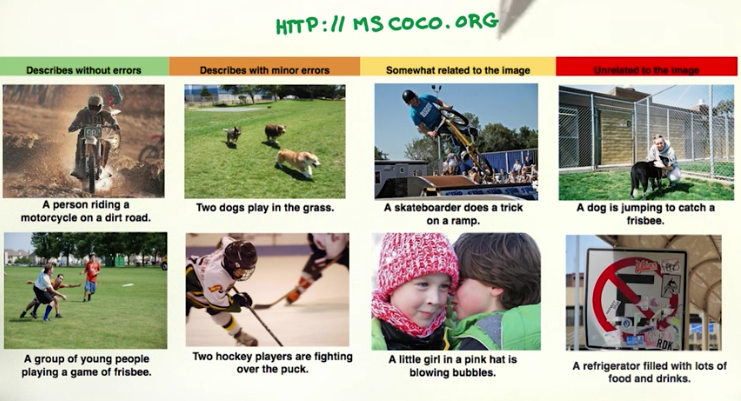
Basically, we can play “LEGOs” with all of these components to work with data of various formats and build many classifiers.